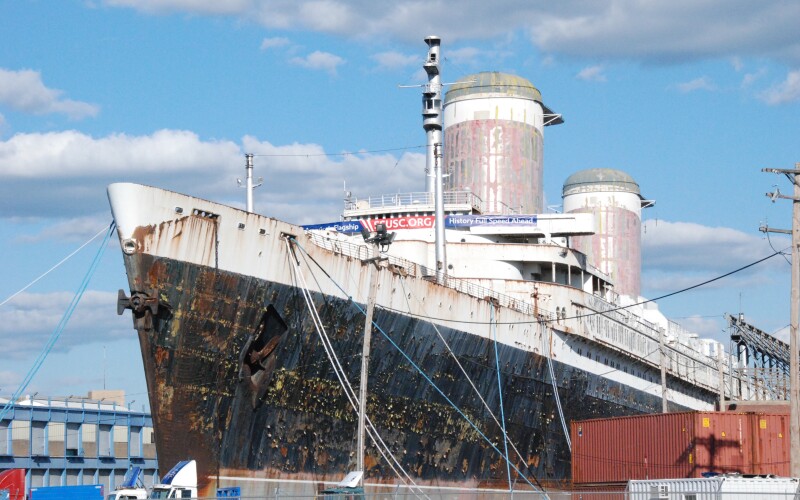The historic liner SS United States may end up being sunk off the Florida Gulf coast as a new artificial reef, after nearly 30 years of restoration efforts now ending soon with the ship’s pending eviction from a Philadelphia pier.
The Okaloosa Board of County Commissioners could vote Tuesday Sept. 3 to approve a contract with the nonprofit SS United States Conservancy to purchase the 990’ ship for sinking off the Destin-Fort Walton beaches. The project has been estimated to cost around $8.6 million.
At 911’ feet, the Oriskany is believed to be the world’s largest artificial reef, according to the FWC, on the bottom 212 feet down 22.5 nautical miles southeast of Pensacola Pass. The SS United States would take that title if it goes to the bottom, and Okaloosa tourism development officials are proposing a $9 million county allocation for the project.
County taxpayers could also put $1 million toward developing an SS United States onshore museum – a longtime goal of preservationists who had hope for commercial redevelopment of the ship into a hotel or other commercial use, incorporating its storied history.
The conservancy fought a move by Pier 82 landlords Penn Warehousing to double dockage fees for the 1950s luxury liner, which the conservancy has hoped to convert to a mixed-use development and maritime museum since acquiring the ship in 2011.
But in June U.S. District Court Senior Judge Anita Brody, while ruling against the rent increase attempt, also directed the conservancy to move the ship from where it’s been tied up since 1996.
“While the Conservancy was vindicated in not being compelled to pay a large sum of back rent to the SS United States’ pier operator, the ruling makes clear this iconic American symbol is in peril,” said SS United States Conservancy president Susan Gibbs at the time of the ruling. Gibbs is the granddaughter of the ship’s designer, William Francis Gibbs.
Once the epitome of American maritime engineering prowess, the 992’x101’ liner was the world’s fastest passenger ship when it entered service in 1952, clocking a trans-Atlantic crossing at a sustained 35 knots, powered by Babcock & Wilcox boilers and Westinghouse geared steam turbines. The liner was subsidized by the U.S. government, and capable of rapid conversion to a troopship.
With World War II and the battle of the Atlantic still a fresh memory for U.S. defense planners, it was thought the SS United States could sealift reinforcements to a new confrontation in Europe while outrunning the danger of Soviet submarines. Capable of crossing the Atlantic in three and a half days, the ship was a popular ride with celebrities of the day.
But in time the SS United States like other trans-Atlantic liners, faced competition from the growing airline industry, and it went out of service in 1969.
The ship passed through several owners before winding up in Philadelphia in 1996, and proposals for reuse followed over the years. The conservancy has envisioned the ship restored for an educational mission, combined with creative commercial use such as hotel or tech businesses.
The conservancy had sought a three-month extension for moving the ship, but meanwhile indicated that the artificial reef option loomed. In an Aug. 21 statement the group said it was deep in negotiations with the Florida counties.
“The Conservancy has also engaged in extensive negotiations with two counties in Florida to advance opportunities for the ship's potential conversion into an artificial underwater reef in tandem with a land-based museum,” the group stated. “The Conservancy has also raised funds to cover the current expenses and potential tow costs, and it continues to work tirelessly to ensure that America’s Flagship is not lost to history.”





